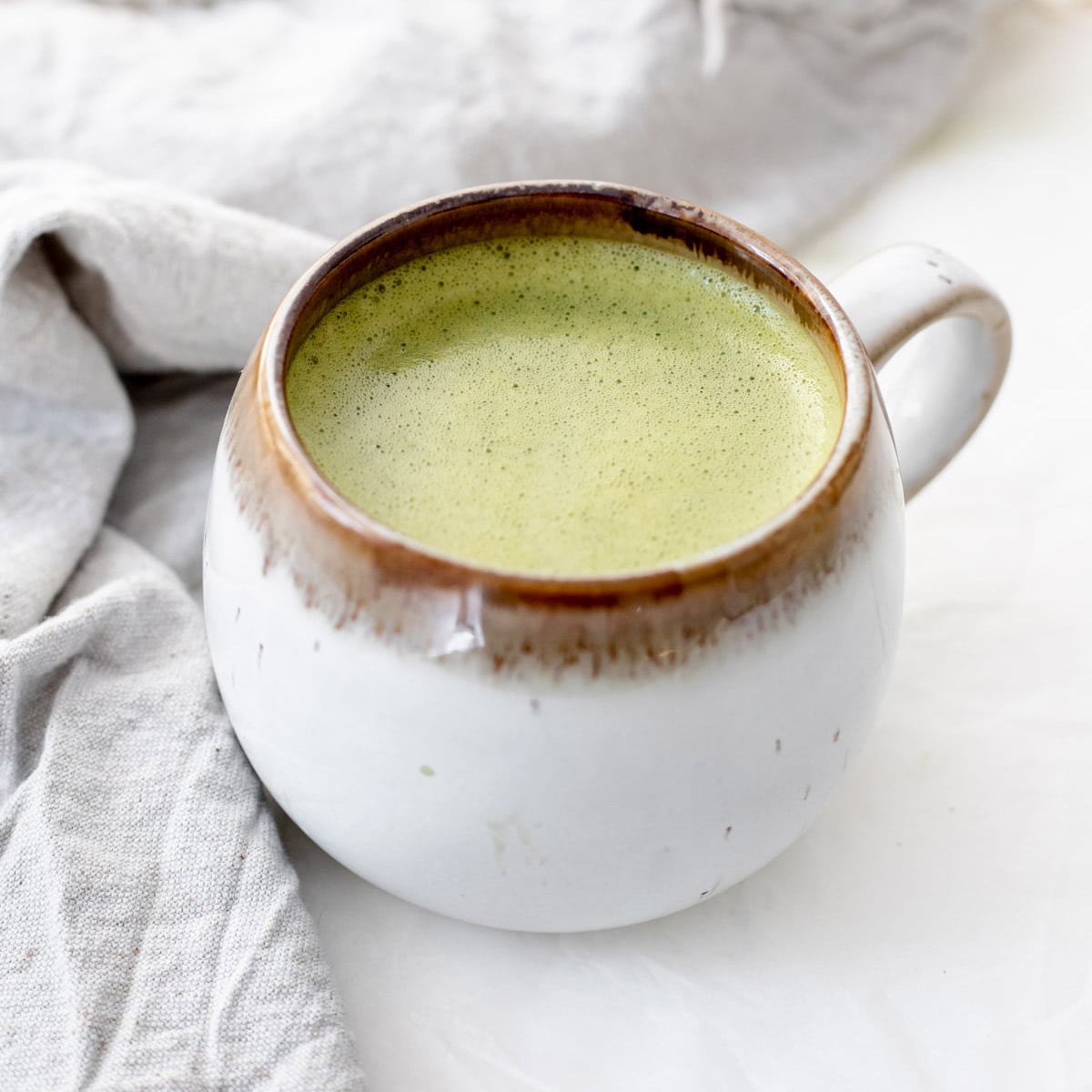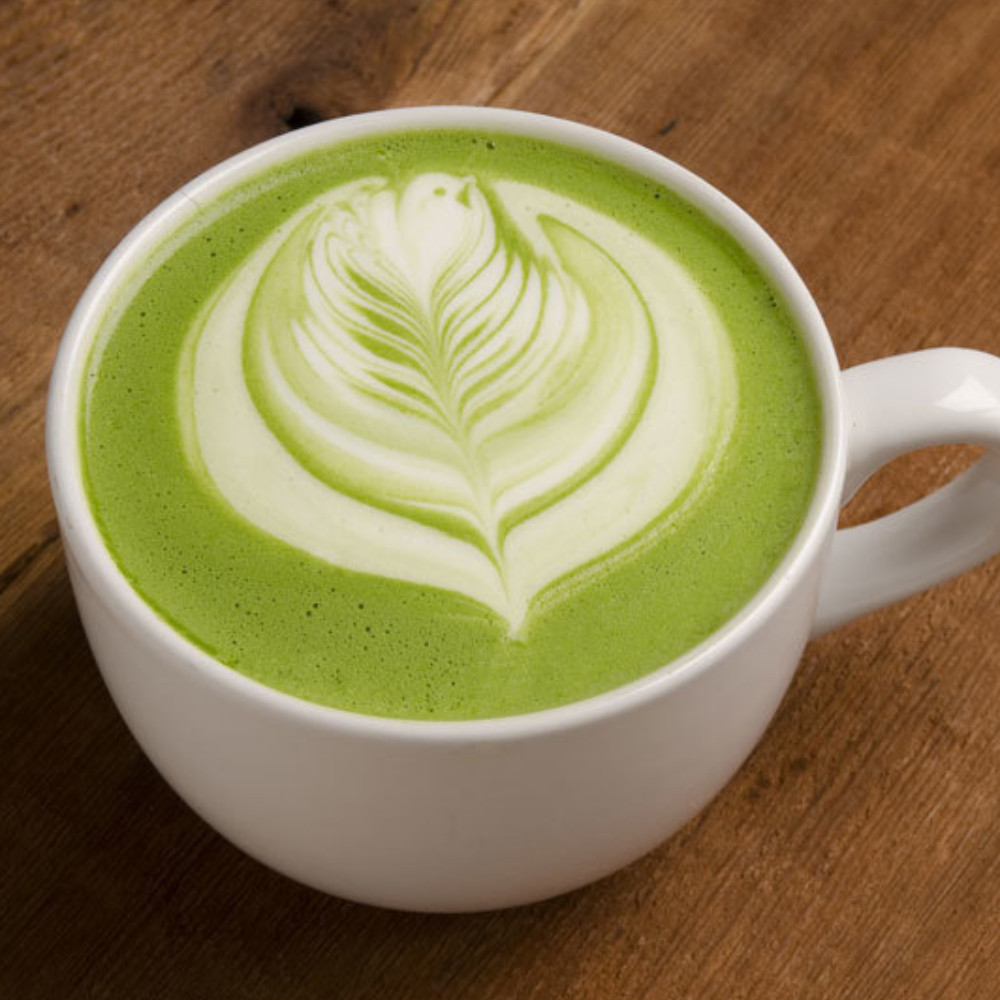Indulge in the vibrant world of matcha with our comprehensive guide to crafting the perfect hot matcha latte. Matcha, a finely ground green tea powder, has gained immense popularity in recent years due to its unique flavor profile and exceptional health benefits.
Join us as we explore the history, ingredients, and step-by-step instructions for brewing a delectable hot matcha latte that will tantalize your taste buds and invigorate your senses.
Whether you’re a seasoned matcha enthusiast or a curious newcomer, this guide will provide you with all the essential knowledge and techniques to elevate your matcha latte experience. From understanding the significance of matcha in modern culinary practices to customizing your latte to suit your preferences, we’ve got you covered.
Introduction
Matcha, a vibrant green tea powder, has gained immense popularity in modern culinary practices, particularly in the realm of beverages. Its versatility extends beyond traditional tea preparations, inspiring the creation of delectable matcha lattes.
Originating in Japan, matcha lattes emerged as a harmonious blend of East and West. Japanese tea ceremonies have revered matcha for centuries, while Western coffee culture embraced its unique flavor and health-promoting properties.
Health Benefits
Matcha consumption is associated with numerous health benefits, including:
- Antioxidant powerhouse: Rich in antioxidants, particularly epigallocatechin gallate (EGCG), which combat oxidative stress and protect against cellular damage.
- Metabolism boost: Contains caffeine, which can stimulate metabolism and promote fat oxidation.
- Cognitive enhancement: Theanine, an amino acid found in matcha, promotes relaxation while maintaining alertness, supporting cognitive function.
- Immune system support: Antioxidants and vitamins in matcha contribute to a robust immune system.
Ingredients
To craft a delectable hot matcha latte, you will require a harmonious blend of ingredients, each playing a pivotal role in the symphony of flavors.
The essential components are as follows:
- Matcha powder: 1-2 teaspoons of high-quality matcha powder form the verdant heart of your latte, infusing it with its signature umami notes.
- Hot water: 1/2 cup of freshly boiled water, not quite at a rolling boil, gently awakens the matcha powder, extracting its vibrant essence.
- Milk: 1 cup of your preferred milk, be it dairy, plant-based, or a combination, provides a creamy canvas for the matcha’s bold flavors.
- Sweetener (optional): 1-2 teaspoons of honey, maple syrup, or sugar, if desired, adds a touch of sweetness to balance the matcha’s earthy notes.
Step-by-Step s
Preparing a hot matcha latte involves a simple yet precise process that yields a delectable and invigorating beverage. Follow these steps to craft the perfect cup:
Tip: For a smooth and frothy latte, use a matcha whisk or a milk frother.
Whisk the Matcha
- Place 1/2 teaspoon of matcha powder in a small bowl.
- Add 1/4 cup of hot (not boiling) water and whisk vigorously until dissolved.
- Continue whisking until the mixture is smooth and frothy, about 30 seconds.
Steam the Milk
- Pour 1 cup of milk into a small saucepan or microwave-safe container.
- Heat the milk over medium heat until it reaches just below boiling point (around 175°F/80°C).
- Use a milk frother or a whisk to froth the milk until it becomes foamy.
Combine and Enjoy
- Pour the whisked matcha into a mug.
- Top with the steamed milk.
- Sweeten to taste with honey or maple syrup, if desired.
- Sprinkle with a pinch of matcha powder for a finishing touch.
Variations and Customization

The classic hot matcha latte is a versatile beverage that offers ample opportunities for customization. Explore different variations and tailor the latte to your preferences.
Experiment with alternative milk options such as almond milk, oat milk, or soy milk to create a creamy and flavorful base. For a richer taste, use whole milk or even heavy cream.
Sweetness and Strength
Adjust the sweetness of the latte by adding more or less sugar or honey to taste. You can also use maple syrup or agave nectar as sweeteners.
Control the strength of the matcha by varying the amount of matcha powder used. For a stronger matcha flavor, add more powder. Conversely, use less powder for a milder taste.
Toppings and Accompaniments
Elevate your matcha latte with a variety of toppings and accompaniments.
- Sprinkle matcha powder on top for an extra burst of flavor.
- Add a dollop of whipped cream for a creamy and decadent touch.
- Drizzle chocolate syrup or caramel sauce for a sweet and indulgent treat.
- Serve with a side of shortbread cookies or biscotti for a delightful pairing.
Presentation
The presentation of a hot matcha latte plays a vital role in enhancing the overall experience. A visually appealing drink tantalizes the senses and heightens anticipation, making it even more enjoyable. Here are some ideas for serving a hot matcha latte in a captivating manner:
Garnishes and Decorations
*
-*Whipped Cream
A dollop of whipped cream on top of the latte creates a cloud-like texture and adds a touch of sweetness.
-
-*Matcha Powder
Sprinkle a dusting of matcha powder on top of the whipped cream or foam for an elegant and sophisticated look.
-*Cinnamon Sticks
Place a cinnamon stick in the latte to infuse it with a warm and spicy aroma.
-*Chocolate Shavings
Shave dark or white chocolate over the latte for a decadent touch and a delightful contrast of flavors.
-*Edible Flowers
Adorn the latte with edible flowers such as rose petals or lavender blossoms for a touch of beauty and a subtle floral fragrance.
Nutritional Information
A hot matcha latte is a nourishing beverage that offers a rich nutritional profile.
Here’s a breakdown of its key nutrients:
Calories: Approximately 150-200 calories per 8-ounce serving, depending on the type of milk used.
Fat: Contains a small amount of fat, primarily from the milk. Full-fat milk will yield a higher fat content than skim or low-fat milk.
Protein: Provides a moderate amount of protein, also derived from the milk. Plant-based milk alternatives, such as almond or oat milk, typically have lower protein content than cow’s milk.
Carbohydrates: Contains carbohydrates primarily from the matcha powder and any added sweeteners. The amount of carbohydrates will vary depending on the sweetness level desired.
Health Benefits of Matcha
Matcha is a nutrient-rich green tea powder that contributes to the overall health benefits of a hot matcha latte. It is a potent source of antioxidants, particularly epigallocatechin gallate (EGCG), which has been linked to various health benefits, including:
- Anti-inflammatory properties: EGCG possesses anti-inflammatory effects, which may help reduce inflammation throughout the body.
- Improved heart health: Studies suggest that regular consumption of matcha may support heart health by lowering cholesterol levels and improving blood flow.
- Boosted metabolism: Matcha contains caffeine, which can stimulate the metabolism and increase energy levels.
- Cognitive enhancement: The L-theanine in matcha has calming and focus-enhancing effects, promoting relaxation while maintaining alertness.
Incorporating a hot matcha latte into a balanced diet can provide numerous health benefits, making it a nutritious and enjoyable choice.
Troubleshooting
Creating a flawless hot matcha latte requires attention to detail and troubleshooting common issues. Let’s delve into potential problems and their solutions to elevate your matcha experience.
Here are some common problems that may arise and how to resolve them:
Clumpy Matcha
- Problem: Lumps of matcha powder remain despite whisking.
- Solution: Sift the matcha powder before whisking to remove any clumps.
Bitter Taste
- Problem: The latte has an overpowering bitterness.
- Solution: Use high-quality matcha powder and adjust the amount to suit your taste preference. Add a sweetener like honey or maple syrup to balance the bitterness.
Grainy Texture
- Problem: The latte has a gritty texture due to undissolved matcha powder.
- Solution: Whisk the matcha powder vigorously with a small amount of hot water until it forms a smooth paste before adding the rest of the milk.
Adjusting to Preference
Personalize your hot matcha latte by adjusting the following elements:
- Matcha Powder Quantity: Adjust the amount of matcha powder to achieve your desired intensity.
- Milk Type: Experiment with different milk options like almond milk, oat milk, or coconut milk to suit your dietary preferences and taste.
- Sweetener: Add honey, maple syrup, or sugar to sweeten the latte to your liking.
- Spices: Enhance the flavor by adding spices like cinnamon, nutmeg, or cardamom.
Conclusion

In summary, crafting a hot matcha latte is a delightful culinary experience that combines the vibrant flavors of matcha with the comforting warmth of steamed milk. Its versatility allows for endless variations, making it a customizable beverage that can cater to diverse preferences.
Whether you prefer a classic latte or one infused with unique flavors, the hot matcha latte offers a satisfying and energizing drink. Embrace the adaptability of this beverage and experiment with different ingredients to create a truly personalized experience.
Final Conclusion
In conclusion, the hot matcha latte is a versatile and adaptable beverage that can be enjoyed in countless ways. Whether you prefer a classic preparation or a customized creation, the possibilities are endless. Experiment with different milk options, sweeteners, flavors, and toppings to find your perfect combination.
Remember, the key to a satisfying matcha latte lies in the quality of your ingredients and the precision of your technique. So, gather your ingredients, follow our step-by-step instructions, and embark on a culinary journey that will leave you refreshed, revitalized, and utterly delighted.
Helpful Answers
What is the difference between matcha and green tea?
Matcha is a finely ground green tea powder, while green tea is made from steeped tea leaves. Matcha is typically more concentrated and has a higher nutritional value than green tea.
How do I choose high-quality matcha powder?
Look for matcha powder that is vibrant green in color and has a fine texture. Avoid matcha powder that is dull or has a coarse texture.
Can I use any type of milk in my matcha latte?
Yes, you can use any type of milk you like in your matcha latte. Some popular options include cow’s milk, almond milk, oat milk, and soy milk.
How do I store matcha powder?
Matcha powder should be stored in an airtight container in a cool, dark place. It is best to use matcha powder within a few months of opening the container.
